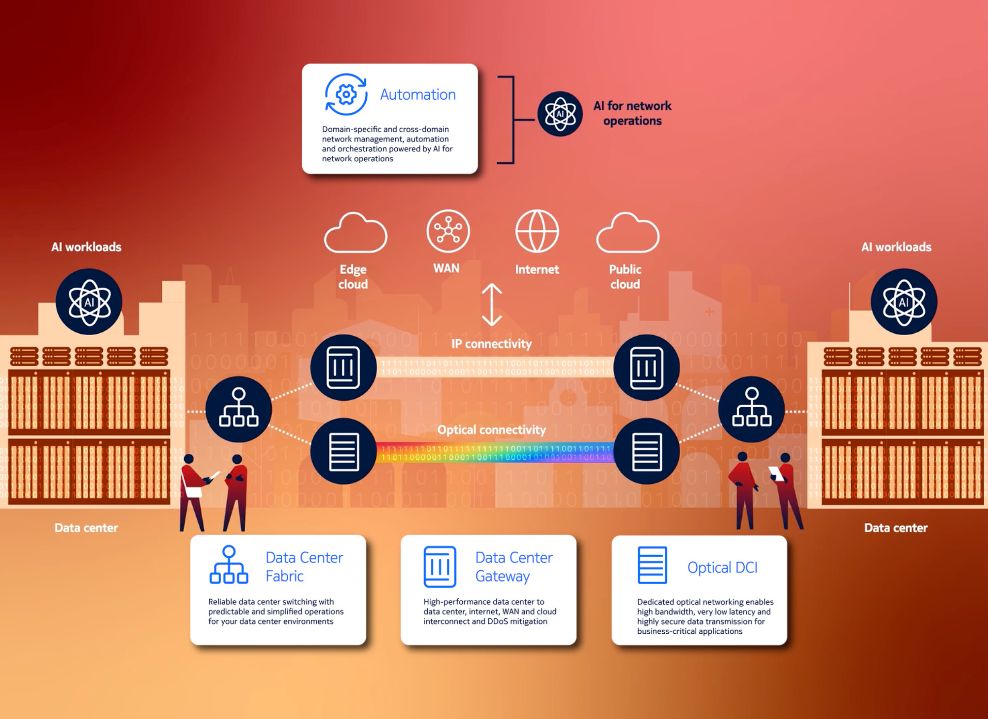Boosting the Cloud Era with High-Performance Data Centre Networking

Dion Leung, Head of Webscale Sales, Network Infrastructure, Nokia Asia Pacific, explores the critical role of advanced networking solutions in driving digital transformation and unlocking new opportunities in the cloud and AI era.
We are living in the era of cloud computing and artificial intelligence, where digital tools are transforming the way we live and work. AI-driven technologies like large language models (LLMs) – such as ChatGPT, Perplexity, and GitHub Copilot – are now integral to tasks like writing blogs, generating code, and conducting research with an efficiency that was once unimaginable. These advancements are not just reshaping individual workflows but are also fuelling the rapid expansion of the digital economy.
However, this growth does not come without its challenges. Two critical aspects that set AI apart from other digital innovations are its intense power consumption and its unique network connectivity requirements. For instance, the GSMA estimates that AI has already increased data centre energy usage by 20–30%, with projections suggesting it could reach 60% by 2030. This rising energy demand and the need for seamless, high-performance data transfer put immense pressure on existing infrastructure.
Furthermore, the GXI 2024 Report projects a 34% CAGR in interconnection traffic centred around regional hubs, putting great pressure on data centre networking infrastructures to keep pace. Meeting these demands requires a new breed of networking solutions designed to deliver the scalability, speed, and reliability needed for AI-powered workloads. As the digital economy continues to expand, so too must our approach to connectivity, with interconnection architectures and Internet Exchange Points (IXPs) evolving to keep pace.
Unlocking new revenue streams
For businesses, an advanced data centre network infrastructure that supports these trends is no longer a choice; it’s a necessity. Strong networking infrastructure opens opportunities for enterprises to build innovative market approaches. By using multi-technology networking solutions, webscale providers, cloud service providers and techco-inspired communication service providers can craft core, transport, and access networks that optimise the flow of data, enabling innovative business models that fuel growth.
Moreover, as the edge of the network continues to grow in importance, partnerships between cloud builders, data centre operators, colocations companies and other cloud infrastructure players are key to creating comprehensive profitable cloud solutions.
I noted that the network edge needs to expand significantly to address challenges brought by AI, industrial automation, and IoT. Edges will be built as AI moves from its current focus on LLMs to more industrialised AI applications requiring more performance and scale. These edges will be built by many players including the cloud builders, communication service providers and other providers. This demand for edge computing will drive the demand for more networking scale and performance calling for robust data centre networking (DCN) capabilities including data centre interconnectivity (DCI), optical transport, data centre fabric and IP peering.
Bridging the digital divide
Another key aspect of network infrastructure transformation, beyond just performance and scale, is enabling more ubiquitous access to digital services for businesses of all sizes regardless of location and financial flexibility.
For instance, Equinix recently expanded its global interconnect network to meet customer demands as they transition to 5G. Similarly, European IXPs such as DE-CIX in Germany and NL-ix in the Netherlands are evolving their networks to achieve faster performance and realise sustainability gains. This expansion highlights the necessity of resilient and flexible data centre networks for a globally connected future.
As digital transformation speeds up, next-generation data centre networking solutions will play a pivotal role in supporting the expansion of IXPs. As I mentioned earlier, IXPs allow seamless data exchange across networks and drive increased connectivity in previously underserved regions, addressing long-standing digital accessibility gaps. The result is a more interconnected global digital ecosystem, where digital services are available to consumers and businesses, regardless of location.
We can see that data centre interconnect solutions that support high-capacity, flexible, and agile connections are essential for building this interconnected world. A prime example includes multi-layered network models that provide seamless connectivity while optimising efficiency and reducing operational costs.
Robust optical DCI solutions and data centre switching capabilities make it possible to create these highly scalable network infrastructures. As the cloud and AI revolution continues, such solutions will enable countries in the Asia-Pacific region and beyond to build resilient digital economies.
Redefining data centres
In today’s market, the need for adaptable data centre networking is a driving force behind digital transformation. IP peering and interconnection services helps data flow across networks, while optical DCI provides the high-speed connections required for data-intensive cloud and AI applications. These technologies allow data centres to support a variety of digital workloads, from AI algorithms to IoT deployments and streaming services, from AI training to inference applications, all of which require large-scale, low-latency connectivity.
The new breed of data centre networks supports an expanding digital ecosystem where data is generated, processed, and consumed at an unprecedented pace. As enterprises adopt advanced digital tools, they can harness data to drive business insights, fuel innovation, and optimise operations.
Building the future
As we advance into the cloud and AI era, the role of data centre networking in driving digital transformation becomes even more significant. By adopting high-performance, reliable networking solutions, organisations across the Asia-Pacific region and beyond can unlock new revenue streams, bridge the digital divide, and redefine the possibilities of the digital economy.
For APAC enterprises, the time to invest in next-generation data centre networking is now. By embracing these innovations, they can build resilient digital infrastructures that propel the region forward in a competitive global marketplace, ushering in a new era of digital empowerment and connectivity.





